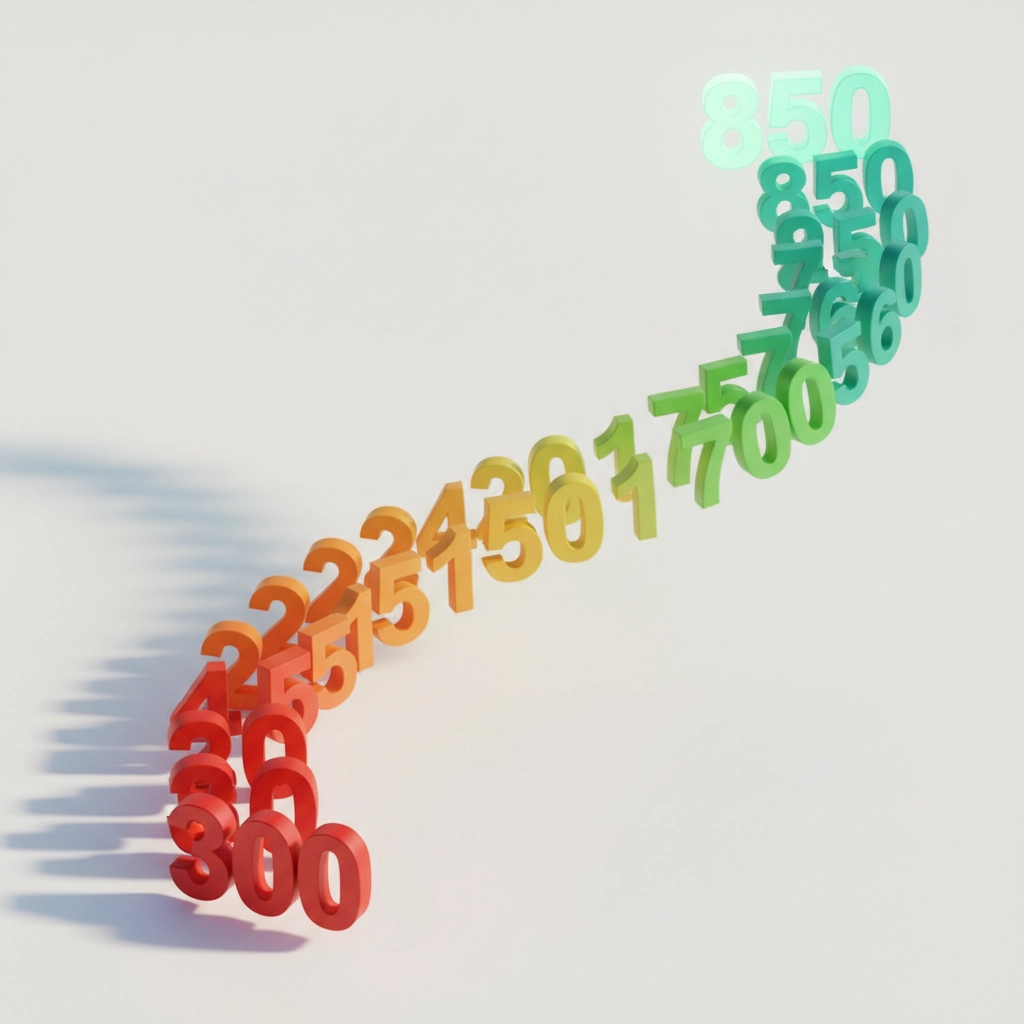Credit Scores Demystified: How to Actually Improve Yours in 2025
- Travis Moore
- Sep 10
- 5 min read
Your credit score isn't some mysterious number that financial institutions use to make your life difficult. It's actually a predictable calculation based on specific factors that you can control and improve. Understanding these factors and taking strategic action can transform your financial opportunities in 2025.
Most people think credit repair takes years of patience and perfect behavior. While building excellent credit does take time, you can see meaningful improvements in your score within months by focusing on the right strategies.
Understanding What Actually Affects Your Credit Score
Credit scoring models prioritize two factors above all others: payment history and credit utilization. These two elements account for 65% of your entire credit score, making them your primary focus areas for improvement.
Payment history demonstrates your reliability to lenders. Every on-time payment builds positive history, while late or missed payments create lasting damage. Credit utilization measures how much of your available credit you're actually using. Maxing out credit cards signals financial stress to scoring models, even if you pay the balance in full each month.
The remaining 35% comes from credit history length, credit mix diversity, and recent credit inquiries. While these factors carry less weight, they become increasingly important as you move from fair credit to excellent credit ranges.

Quick Actions for Immediate Score Improvements
Check Your Credit Report for Errors
Start by obtaining your free credit report from all three major bureaus. Scrutinize every detail for inaccuracies, including incorrect personal information, accounts you didn't open, or payments marked late when you paid on time.
Disputing legitimate errors can increase your score by 10-20 points within 30-60 days. Set up a systematic approach by checking one bureau every four months, ensuring year-round monitoring without overwhelming yourself.
Optimize Your Credit Utilization Ratio
Keep your credit card balances at 20% or less of your assigned limits. If you have a $5,000 credit limit, maintain balances under $1,000 to optimize your utilization ratio. Some experts recommend staying below 10% for the highest scores.
Pay down existing balances before making new purchases. If you must carry balances, spread them across multiple cards rather than maxing out one card, as individual card utilization also affects your score.
Request Credit Limit Increases
Contact your credit card companies to request higher limits, especially if your income has increased or you've maintained good payment history for six months or more. Many companies allow requests every six months through online portals or customer service calls.
Higher limits improve your debt-to-credit ratio immediately, provided you don't increase your actual spending. While hard credit inquiries might cause a slight temporary dip, the long-term utilization benefits typically outweigh this minor impact.

Building Long-Term Credit Health
Establish Consistent Payment Patterns
Pay all bills on time, every time. Set up automatic payments for at least the minimum amount due on all credit accounts. Late payments remain on your credit report for seven years, making consistency crucial for sustained improvement.
Consider paying credit card balances twice monthly instead of once. This approach keeps your reported balances lower and can improve your utilization ratio even if you're using your cards regularly throughout the month.
Maintain Your Existing Credit History
Keep older credit cards active with small, regular purchases rather than closing them. These accounts contribute valuable history length and available credit to your profile. Use them for recurring bills like streaming services, then set up automatic payments to maintain activity.
Closing old accounts reduces your available credit and can hurt your utilization ratio. The positive payment history remains on your report for 10 years, but you lose the ongoing utilization benefits immediately.
Diversify Your Credit Portfolio
Maintain a mix of credit types, including revolving credit (credit cards) and installment loans (auto loans, mortgages, or personal loans). This credit mix demonstrates your ability to manage different types of financial obligations.
However, don't open new accounts solely for mix purposes. Let diversification happen naturally as you make major purchases or refinance existing debt. The credit mix factor has less impact than payment history and utilization.
Advanced Strategies for Challenging Situations
Secured Credit Cards for Credit Building
If traditional credit cards aren't accessible due to poor credit history, secured credit cards offer a pathway to improvement. These cards require a deposit as collateral but function like regular credit cards for purchasing and credit reporting purposes.
Choose secured cards that report to all three major credit bureaus and offer graduation paths to unsecured cards. Look for cards with low fees and the ability to increase your credit line over time. Many secured card users see score improvements within six months of responsible use.

Leverage Professional Credit Counseling
Work with nonprofit credit counseling agencies accredited by the National Foundation for Credit Counseling (NFCC). These organizations provide budgeting assistance and can negotiate with creditors on your behalf for more manageable payment plans.
Avoid agencies promising quick fixes or charging excessive upfront fees. Legitimate counseling services focus on education and sustainable financial habits rather than temporary score manipulation techniques.
Strategic Debt Payoff Methods
Use additional income from side hustles or freelancing to accelerate debt payoff. While income doesn't directly affect credit scores, reducing balances faster improves your utilization ratio more quickly.
Consider the avalanche method for debt payoff: make minimum payments on all accounts while putting extra money toward the highest-interest debt first. This approach saves money on interest while systematically reducing your overall debt burden.
Timeline and Realistic Expectations
Credit improvement requires patience and consistent effort. Most meaningful changes develop over months rather than weeks, with the most significant improvements often occurring between three and 12 months of consistent positive behavior.
Disputing errors can show results within 30-60 days. Utilization improvements appear within one to two billing cycles after paying down balances. Payment history improvements accumulate gradually, with each on-time payment strengthening your profile.
Focus on sustainable habits rather than quick fixes. Developing good spending patterns, maintaining realistic financial goals, and staying disciplined throughout the process create lasting credit health that extends far beyond 2025.

Avoiding Common Credit Improvement Mistakes
Don't close paid-off credit cards unless they carry annual fees that outweigh their benefits. The available credit and account history provide ongoing value to your credit profile.
Avoid applying for multiple new credit accounts within short timeframes. Each hard inquiry can temporarily lower your score, and multiple inquiries signal credit-seeking behavior to lenders.
Don't rely on credit repair companies promising unrealistic results. Most legitimate credit repair involves actions you can take yourself: disputing errors, paying down balances, and maintaining consistent payment patterns.
Taking Action on Your Credit Improvement Journey
Start with the fundamentals: check your credit report, pay down high balances, and establish automatic payments for all credit accounts. These core practices deliver the most significant and lasting improvements to your credit profile.
Monitor your progress monthly through free credit monitoring services or credit card apps that provide score updates. Regular monitoring helps you identify improvements and catch new issues before they become major problems.
Remember that credit improvement is a marathon, not a sprint. Consistent positive behaviors compound over time, creating financial opportunities and saving you thousands of dollars in interest on future loans and credit products.
For additional guidance on building wealth and managing your finances effectively, explore our comprehensive resources at Thrive: Money, Mind, Tech.